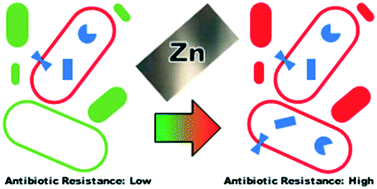Effects of zinc orthophosphate on the antibiotic resistant bacterial community of a source water used for drinking water treatment†
Abstract
Antibiotic resistant bacteria (ARB) and antibiotic resistance genes (ARGs) have been shown to increase in abundance in drinking water distribution systems (DWDS). Metals are a known stressor for the selection of ARB and the ARGs they harbor, and zinc orthophosphate is one corrosion inhibitor added to finished drinking waters. The potential impact of zinc orthophosphate on antibiotic resistance in drinking water remains unknown. The goal of this study was to determine the possible effects of zinc orthophosphate on the relative abundance of ARB and ARGs. Increasing concentrations of zinc orthophosphate, ranging from 0 to 10 mg L−1 orthophosphate equivalence, were added to 1 L microcosms inoculated with source water and mixed for 14 days. Direct plating with nine antibiotics was performed on days 0, 3, 7, and 14 resulting in total heterotrophic bacterial counts (THC). Significant differences were observed in the relative abundance of ARB over time for rifampicin, ampicillin, erythromycin, and trimethoprim resistant heterotrophic bacteria during exposure to zinc orthophosphate. Quantitative-PCR revealed that there was also a significant difference in the absolute and relative abundance of intI1, sul2, and qacH genes, dependent on the concentration of zinc orthophosphate. Additionally, water treated with equivalent orthophosphate concentrations of zinc orthophosphate, zinc chloride, and sodium orthophosphate indicated that the zinc component of zinc orthophosphate was the selective pressure of antibiotic resistance through promoting growth. The corrosion inhibitor, zinc orthophosphate, selects for ARB and ARGs while sodium orthophosphate did not impact ARB and ARGs suggesting sodium orthophosphate or sodium silicate may be preferred corrosion inhibitors in controlling antibiotic resistance in DWDS.



 Please wait while we load your content...
Please wait while we load your content...